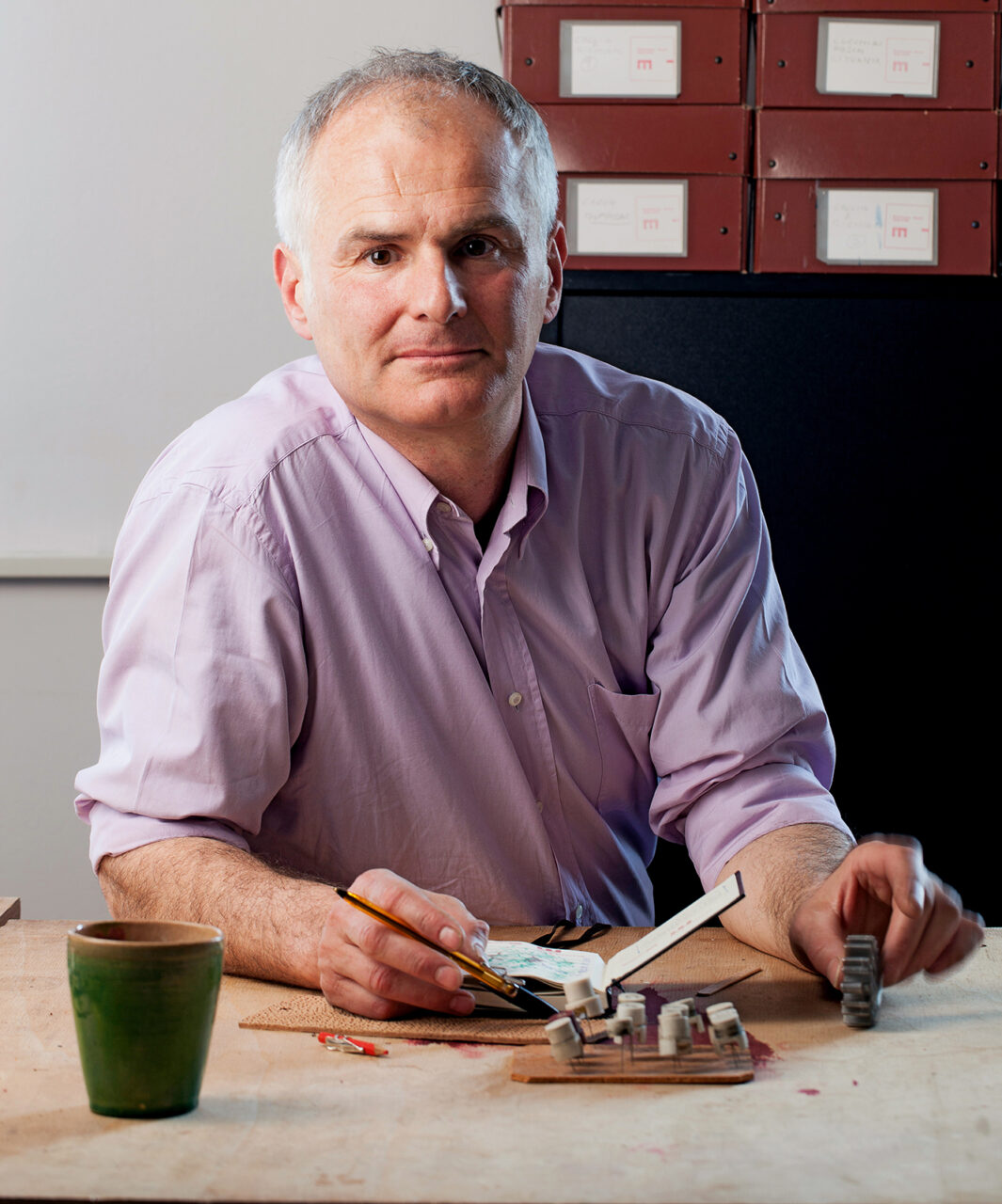
‘Let me give you a quick definition of myself,’ explains Emanuele Ricci. ‘You know those traditional Italian horse races like the Palio in Siena? Well, there’s always one horse that runs without a rider. But although it may be able to run faster than the other horses, it never wins the race. That horse is me.’
Emanuele Ricci is the head of a one-man design studio. Although he calls upon other people when necessary, his working methods are more like those of a composer. For Ricci, the creative process is highly personal, moving at its own carefully controlled pace and nourished by a boundless, omnivorous curiosity.
‘I love music,’ says Ricci. ‘I like everything, from medieval polyphony to house. I’m fascinated by music’s grand vision, by the pure mathematics of it – the depth and length of a bow’s movement across the string, and so on.’
Ricci’s musical heroes include Kevin Volans and Moondog. Volans is a South African musician (now resident in Ireland), who restructured the sounds of the African savannah into his composition White Man Sleeps. Moondog, a blind musician whose compositions anticipated minimalism, performed on the streets of New York dressed as a Viking.
‘Moondog wrote an incredible piece of music called Westward Ho. He took a musical canon, repeated it and inserted the sounds of the street – everyday noises that grew into harmonies,’ says Ricci. ‘Both of these artists used found materials to create something unique, something luxurious.’
On the walls of Ricci’s studio hangs a ‘bestiary’ of objects, spanning every field from aeronautics to zoology. On a spartan table sits a computer, and between the keyboard and the screen is a sketchpad and drawing pen. It is only through combining many tools that Ricci can capture his thoughts, translate them into actions and set them down.
His studio is on the top floor of a quietly refined apartment block in Milan. The light, which floods into the working area, also filters through into the corridor. This corridor serves both as a library that includes bolts of fabric, collections of insects, box after box of research materials and a sewing machine, and as a ‘laboratory’ where Ricci archives the results of his design experiments with assorted objects. Every project is carefully documented, and each element in the process that leads to the final synthesis is detailed. The library archive is split into two collections: one contains items found in the field; the other has materials, including toys, that Ricci finds at fairs and boot sales.
He is always on the look-out for technologies that he can transform by placing them in new contexts. Ricci’s openness to this approach as a problem-solving method is the secret of his success as a designer.
Ricci qualified as an agriculturalist, and one gets a sense of the unique character of his eclectic practice by following the invisible thread that links his clients. He has worked in the automotive industry, in sports technology and in furniture. In the 1980s he worked in lighting design, and this experience is evident in the flurry of questions he asks at the beginning of each new challenge. As he says, ‘The behaviour of light on surfaces, the play of light and shadow – high and low, positive and negative – this is what I’m trying to achieve.’
The designer says that the orchestration of these elements (perhaps mirroring the process of musical composition) is what lies behind the creation of Spillo – the new paper he has designed for Fedrigoni. ‘When, in 2010, I was asked to take this on, I had never made paper in my life,’ he says. ‘It was the same story when the textiles manufacturer Rubelli came and asked me to design some fabrics.’

